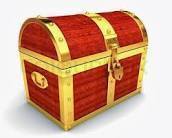Algeria

Certainly! Here is the complete historical financial report of Algeria translated into English:
Complete Historical Financial Report of Algeria
Basic Information
-
Country Name: Algeria (Al-Jazā’ir)
-
Official Language: Arabic
-
Language ISO Code: ar
-
Country ISO Code: DZ
Currencies That Have Circulated in Algeria
1. Algerian Franc (Franc Algérien)
-
ISO Code: FRF (before independence)
-
Singular Name: franc
-
Plural Name: francs
-
Subdivision: 1 franc = 100 centimes
-
Singular Fraction Name: centime
-
Plural Fraction Name: centimes
-
Production Start Date: 1830 (beginning of French occupation)
-
Production End Date: 1964
-
Circulation Start Date: 1830
-
Circulation End Date: 1964
-
Minted Coin Values: 1, 2, 5, 10, 20, 50 centimes; 1, 2, 5 francs
-
Printed Banknote Values: 5, 10, 50, 100, 500, 1000 francs
-
Designs/Symbols: French imagery and symbols, values in French and Arabic
-
Mint Locations: France and mints in Algeria during occupation
-
Current Circulation Status: Out of circulation since 1964
-
Issuing Authority: French government during occupation
2. Algerian Dinar (الدينار)
-
ISO Code: DZD
-
Singular Name: dinar
-
Plural Name: dinars
-
Subdivision: 1 dinar = 100 centimes
-
Singular Fraction Name: centime
-
Plural Fraction Name: centimes
-
Production Start Date: 1964
-
Production End Date: ongoing
-
Circulation Start Date: 1964
-
Circulation End Date: ongoing
-
Minted Coin Values: 1, 2, 5, 10, 20, 50, 100 dinars
-
Printed Banknote Values: 100, 200, 500, 1000, 2000 dinars
-
Designs/Symbols:
-
Coins feature national symbols such as the Algerian eagle, mosques, and Islamic motifs
-
Banknotes depict prominent national figures, Islamic architecture, landscapes, and state emblems
-
-
Mint Locations: Algerian mint, with some coins and notes produced abroad
-
Current Circulation Status: Active
-
Issuing Authority: Central Bank of Algeria
Economic and Historical Context
-
During the French occupation (1830–1962), the French franc was the official currency, minted in France and Algeria.
-
After independence in 1962, the franc was replaced by the Algerian dinar in 1964 to assert national economic sovereignty.
-
The dinar has experienced periods of inflation and volatility, especially due to Algeria’s reliance on oil and gas revenues.
-
Monetary reforms have been implemented to control inflation and stabilize the currency.
-
The Central Bank of Algeria is responsible for monetary policy and currency issuance.
Designs, Symbols, and Signatures
-
Coins bear national and Islamic symbols such as the Algerian eagle, Ketchaoua Mosque, and Arabic inscriptions.
-
Banknotes feature images of historical figures like Emir Abdelkader, symbols of the Algerian revolution, and notable scientists and artists.
-
Banknotes are signed by the Governor of the Central Bank of Algeria and the bank’s Director General.
Print Runs, Production Quantities, and Honors
-
Specific print run data is not publicly available, but coins and banknotes are produced in quantities sufficient to meet domestic demand.
-
Commemorative coins have been issued on national occasions such as Independence Day and the Algerian Revolution anniversary.
Current Status
-
The Algerian dinar is the official currency and is actively circulating.
-
Centimes are rarely used in daily transactions due to their low value.
Monetary Legislation
-
The Central Bank of Algeria’s legislation governs currency issuance and monetary policy.
-
Laws related to economic independence and inflation control influence monetary policy decisions.
Names and Positions of Banknote Signatories
-
Signatures of the Governor of the Central Bank of Algeria (e.g., Abdelkader Ben Salah or current officeholder)
-
Signatures of the Director General of the Central Bank
People Honored on Coins and Banknotes
-
Emir Abdelkader (leader of resistance against colonization)
-
Ahmed Ben Bella (first president of independent Algeria)
-
Prominent figures from the Algerian Revolution
-
Recognized Algerian scientists and artists
This report provides a detailed overview of Algeria’s monetary evolution, from the French franc during colonial times to the current Algerian dinar, including technical, historical, and cultural information about the country’s coins and banknotes.
If you want, I can now assist with the next country report or any other request!
 Nilton Romani
Nilton Romani
